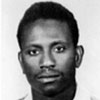|
Momodou

Denmark
11804 Posts |
 Posted - 01 Sep 2011 : 10:19:33 Posted - 01 Sep 2011 : 10:19:33


|
Elections will be held here in Denmark on September 15th 2011.
----------------
Election '11 | How does it work?
Published 31.08.11 15:14
 When Danes cast their ballots, it is the first step in a complex vote counting system that seeks to ensure proportional representation. But in the end, it is the queen who decides - ceremonially, anyway The Danish parliament (‘Folketinget’) consists... When Danes cast their ballots, it is the first step in a complex vote counting system that seeks to ensure proportional representation. But in the end, it is the queen who decides - ceremonially, anyway The Danish parliament (‘Folketinget’) consists...
The Danish parliament (‘Folketinget’) consists of one chamber with 179 seats – 175 seats in Denmark and two each for the Faroe Islands and Greenland.
Of those seats, 135 are distributed through proportional representation in the 10 constituencies. Constituencies have as few as two representatives (Bornholm) and as many as 20 (Zealand Constituency).
An additional 40 seats are allotted based upon the total distribution of votes in three voting regions – Central and Northern Jutland, Zealand and Southern Denmark and Greater Copenhagen.
The point of the dual layer is to ensure that parties' share of the seats in parliament reflects their share of the vote.
Only parties that win more than two percent of the overall vote gain a seat. However, a candidate who wins seat in a constituency can claim the seat, even if the party does not clear the two-percent hurdle.
Denmark tends to have a high election turnout, between 80 and 90 percent. When in the election booth, voters have two options. They can either vote directly for a specific party candidate – a personal vote – or they can vote for the entire party – a party vote. Party votes are distributed between party candidates either according to the order they appear on the party list or according to how many personal votes they gained, depending on the preference of the party.
If the government loses its majority in the election, the formation of a new government takes place in a process called the queen’s round (‘dronningerunde’). Each party leader consults with the queen, who then chooses someone to lead negotiations. If a majority does not oppose the government that the negotiator proposes, then a new government is formed with the negotiator usually selected as prime minister. If a majority opposes the proposed government, a new round of negotiations starts. In 1988 it took four rounds before a government was formed.
The parliament is elected for four years but can be dissolved by the prime minister at any time. It holds its meetings in Christiansborg Castle in central Copenhagen.
The letter associated with each party indicates their place on the ballot. The choice of letter has to be agreed with the electoral commission.
Source: Copenhagen Post
SEE RELATED STORIES:
Election ‘11 | What are they talking about?
|
A clear conscience fears no accusation - proverb from Sierra Leone |
|

